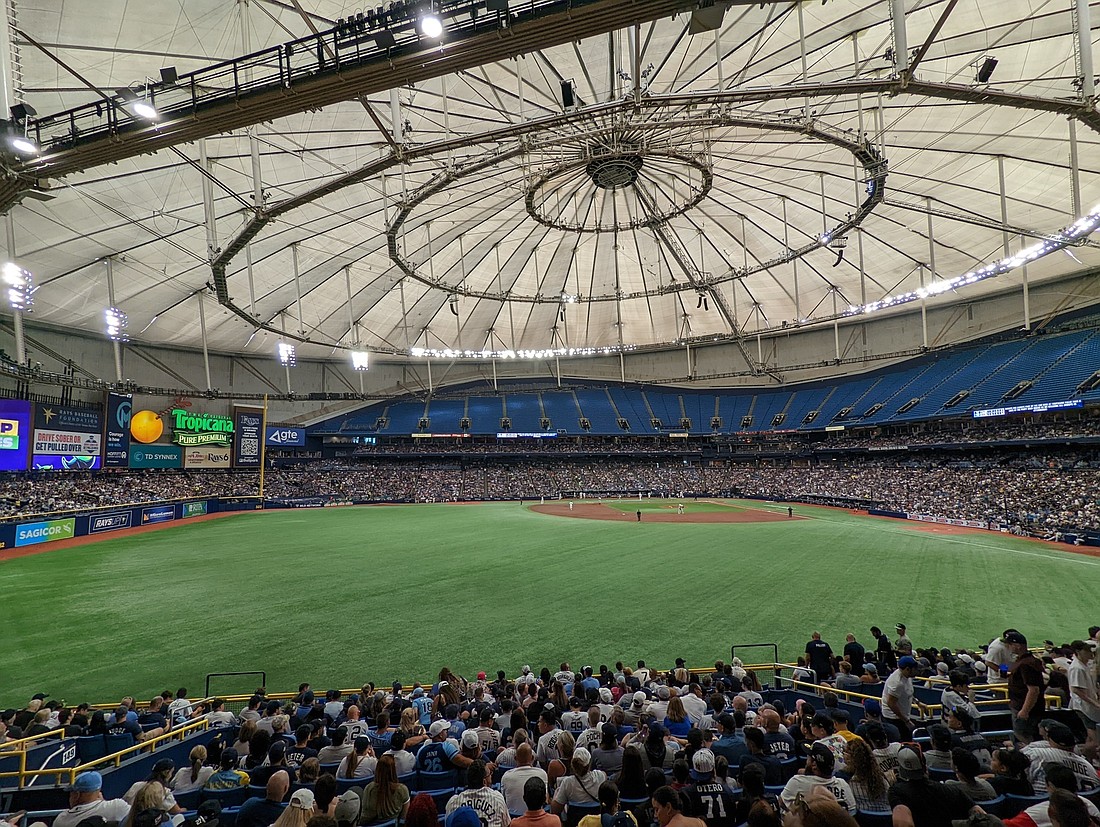- April 18, 2025
-
-
Loading

Loading

Just days after announcing four development groups had submitted proposals for the redevelopment of the 86-acre Tropicana Field site in the heart of St. Petersburg’s historic Gas Plant district, the city made the reports public.
The proposals, which are available on the city’s website, each address the key requirements the city laid out when it issued a RFP in August: a 17.3-acre carve-out for a baseball stadium; specific requirements for affordable and workforce housing; and new details that respond to current economic and societal conditions and community sentiment.
According to the city, a selection will be made in early 2023.
St. Petersburg Mayor Ken Welch says the proposals represent “an important milestone for our community as we forge a path of inclusive progress for this generational project.” He says along with residential development and the baseball stadium the project is meant to increase opportunities for youth employment, education, recreation and career readiness as well as live up to the guiding principles developed from talking to residents over the past several months.
For city leaders this project will define what St. Petersburg will look — and feel — like for generations to come and could once and for all decide the fate of the Tampa Bay Rays in the city and region.
While that may be seen as overblown to those on the outside, the fact is that St. Petersburg has reached a crossroads of sorts as towers with million-dollar condos and high-priced restaurants taking over what was once working-class neighborhoods, displacing people who have lived in the community for decades. By including affordable housing projects and reinvesting in what was once the historic hub of the city’s Black community, the city looks to bring the city back to the people who built it.
Anyone looking to see just how the city has been affected in the name of growth needs to look no further than the Gas Plant neighborhood now being discussed. The historic Black community was displaced by the construction of Interstate 175 and the stadium in the 1980s and the promised jobs, opportunities and equitable development never materialized for residents and business owners.
Not only is this redevelopment aimed at rectifying that, it comes as the Rays organization enters the final four years of its lease for Tropicana Field and as time is running out for the team to find a new home in St. Petersburg or Tampa — or somewhere entirely new.
For Welch, who was sworn in as mayor in January and who tossed out the development plan chosen by his predecessor, this project is an opportunity to put a stamp on the city and speaks of the decisions being made now as changing St. Petersburg for decades to come.
“As we move forward with this process, it is imperative that we continue to respond to the needs of today and take time to ensure we are getting this project right,” he says. “The development of these 86 acres is a project that will affect our entire community for generations to come. The decisions we make today will affect not only our current residents, but young people and future generations, who will one day make up the fiber of this great city.”
Here are some highlights from each of the projects:
Hines and Tampa Bay Rays entire proposal
Sugar Hill entire proposal
Retoration Associates entire proposal
50 plus 1 entire proposal